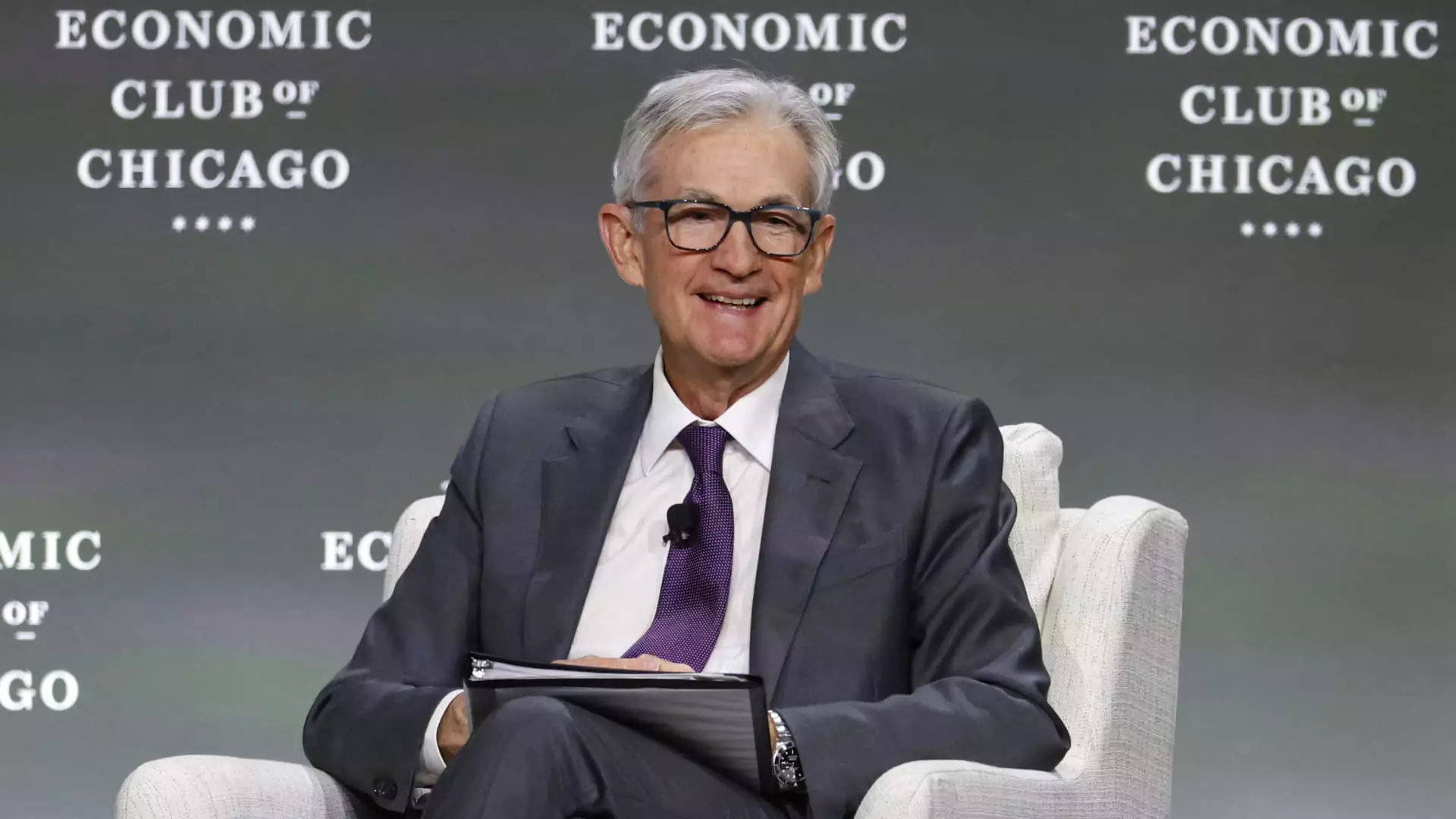The Federal Reserve finds itself in a precarious position as it heads into a crucial policy decision. This moment is defined not by clarity but by uncertainty, which shapes the landscape of American economic policy today. With unresolved issues surrounding trade tariffs imposed by President Donald Trump, coupled with mixed economic indicators, the Fed appears to be stuck in a holding pattern. Some may argue that this inertia is a prudent approach; however, the real danger lies in the potential ramifications of inaction amidst a climate of volatility.
The conundrum facing the Fed is profound. Interest rate cuts, historically a tool to spur economic growth when facing downturns, seem unlikely this time around, as futures markets indicate scant probability of immediate cuts. Analysts have projected varied outcomes; while some believe a couple of cuts could be on the horizon, others remain skeptical, suggesting that the Fed will merely play the waiting game at this time. This indecisiveness not only fuels uncertainty but potentially endangers the economic recovery still trying to gain its footing.
The Political Undertow
Underlying this economic complexity is the political environment, which adds layers of nuance to the Fed’s decision-making process. Trump’s tariffs, ostensibly a maneuver to boost domestic industry, act as a double-edged sword. While the administration may claim progress on trade deals, the lack of concrete announcements casts shadows of doubt over consumer and business sentiment. The messaging from the White House serves as an undertow pulling the Fed closer to the rocky shore of political entanglement, challenging its independence.
Former Fed officials like Vincent Reinhart poignantly highlight the Fed’s struggle: they must not only gauge how tariff policies take shape but also assess their broader economic implications, particularly on inflation expectations. Waiting for “the dust to settle” may seem prudent, but inaction can lead to further confusion. If the Fed continues to faff about instead of providing a forward-looking stance, it falls into the trap of being too reactive, stifling economic momentum in the process.
A Data-Driven Response
The conundrum extends into the very fabric of economic data the Fed must navigate. As we have observed recently, there exists a dissonance between various metrics. The reality is that while gross domestic product (GDP) stumbled in the first quarter, hiring trends seem relatively strong, with job additions outpacing expectations. This paradox is compounded by sentiment reports indicating a visceral pessimism among consumers and businesses alike.
These contradictions will undoubtedly shape the Fed’s press conference following the policy decision. Chair Jerome Powell must address an anxious public, reiterating the Fed’s commitment to patience while still positioned to adapt if necessary. Yet, this reliance on tangible data before making moves can feel dangerously slow in the fast-paced financial landscape. A lack of clear guidance from Powell may heighten uncertainty and fuel speculation in the markets, leading to unnecessary volatility.
The Broader Economic Spectrum
There’s an urgent need to ask what kind of economic policy the U.S. hopes to embody. The Fed’s current predilection toward maintaining a status quo reflects a broader ethos centered around fear and caution. While identifying weakness in employment markets is crucial, we must also recognize that falling behind in proactive economic policy further destabilizes the financial equilibrium. The urgency of our economic landscape demands quick and decisive action, lest we slip further into economic malaise.
Moreover, the constant fear of inflation that lingers among Fed policymakers can become a self-fulfilling prophecy. As inflation expectations climb, consumer and business morale may drown in pessimism, leading to behavior that constrains spending and investment. In this regard, the Fed’s hesitance can ironically exacerbate the very issues it aims to mitigate, inhibiting trust in long-term recovery.
This moment demands a robust intervention from the Federal Reserve—a strong, decisive strategy that requires nuanced consideration of both domestic and global factors. If the Fed retains its current strategy of inaction under the guise of caution, it risks both economic stagnation and the alienation of public trust. The U.S. economy thrives on optimism and confidence; keeping the pedal to the metal by embracing bold yet measured actions could set a promising course for recovery. Thus, we find ourselves questioning: how much longer can the Fed afford to wait, and what will it take to catalyze real economic progress? The answers are essential for navigating the uncertain financial waters ahead.

